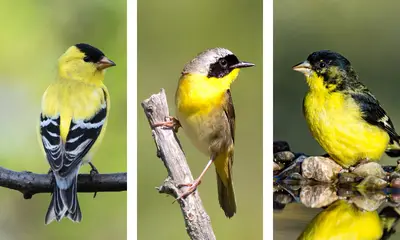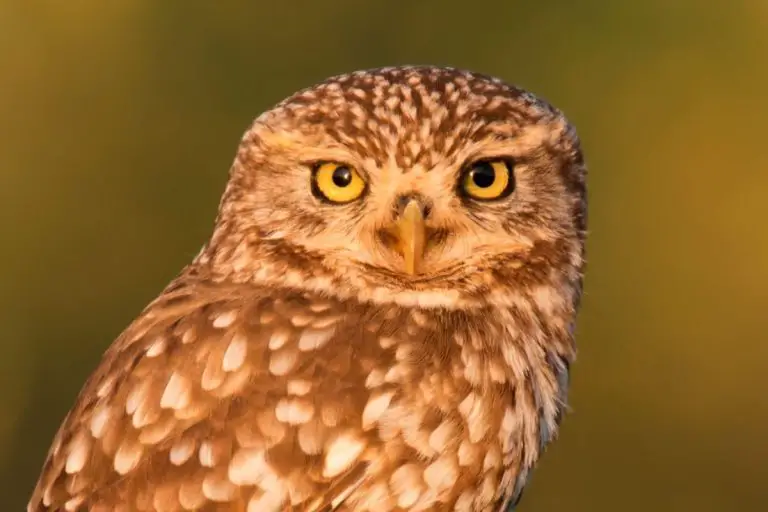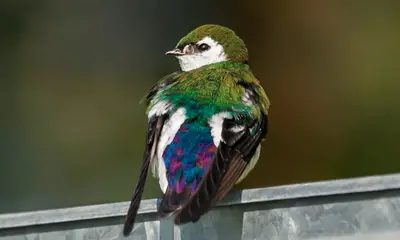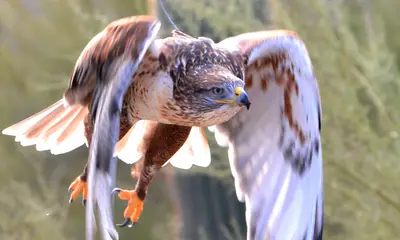15 Types of BLUE And RED BIRDS (ID Guide With Photos)
Did you recently spot a blue and red-colored bird? In that case you’ll probably want to know what species you saw.
Identifying birds that have both red and blue plumage is not as easy as it might seem, since there are surprisingly many bird species that fit this description.
To help you identify the bird you saw, we’ll cover all the most common blue and red birds in this article.
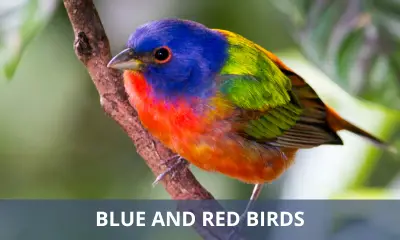
What are the types of blue and red birds?
There are 15 different types of birds that are both blue and red, which are covered in full detail below.
Note that out of these birds, only the Painted Bunting is found in North America, while the other birds hail from other parts of the world.
Painted Bunting
Scientific name: Passerina ciris
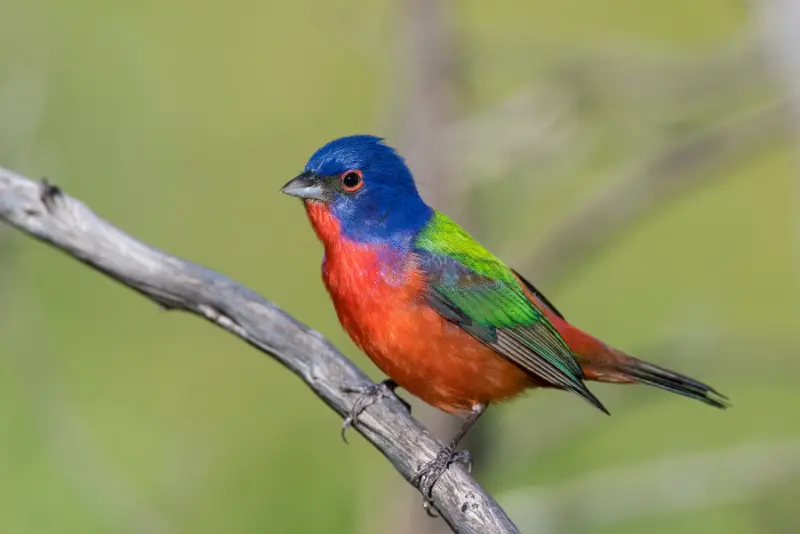
The Painted Bunting is a gorgeous small songbird with a very colorful plumage.
Adult males have a bright red chest, throat, belly, and rump, contrasting with a dark blue hood. Their backs and the wings are yellowish green.
Females and immature birds are pale green on top, with buff yellow underparts.
During the months of May through September, the Painted Bunting may be seen breeding in the southeastern parts of the United States.
It is a migratory bird, with most individuals wintering in Central America, except for a few birds that spend the winter in southern Florida.
The secretive nature of the Painted Bunting makes it hard to observe, notwithstanding the bright colors of the male.
Its preferred habitat are clearings and margins of dense forests in areas close to water.
Similar to other buntings, it feeds mostly on seeds, except for the breeding season, when insects form an important part of its diet.
Crimson Rosella
Scientific name: Platycercus elegans
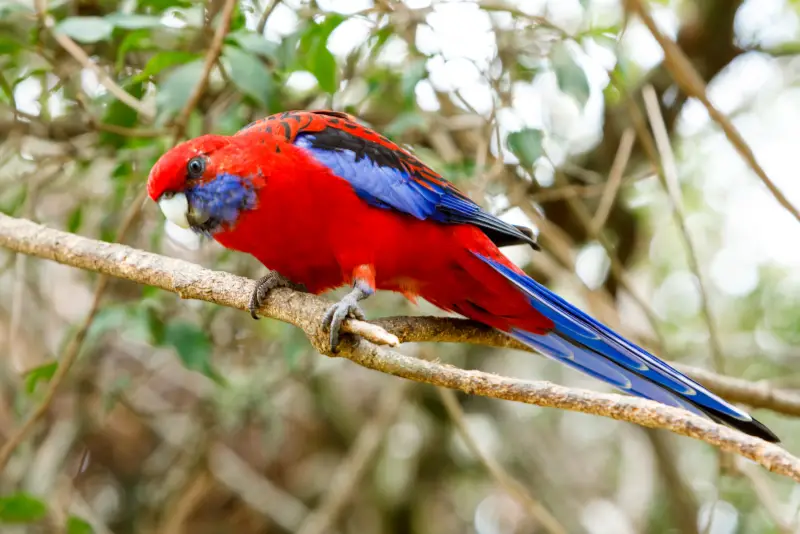
The Crimson Rosella is quite variable in its color, but all individuals have blue cheek patches.
Also, regardless of color variability, most Crimson Rosella’s have extensive red plumage on their head and body, and blue feathers in their wings and tails.
In addition, some individuals have extensive yellow plumage on their chest and belly, and others have more orange feathers.
These attractive birds are native to southern Australia, where they occur in a variety of woodland habitats.
Sri Lankan Blue Magpie
Scientific name: Urocissa ornata

This long-tailed blue bird has a reddish chestnut hood and wings, as well as a bright red eye ring and beak.
This magpie is only found in southern Sri Lanka, and has unfortunately become quite rare in recent years.
Its preferred habitat is lowland rainforest, where it is often observed foraging high up in the canopies in small groups.
Red Lory
Scientific name: Eos bornea
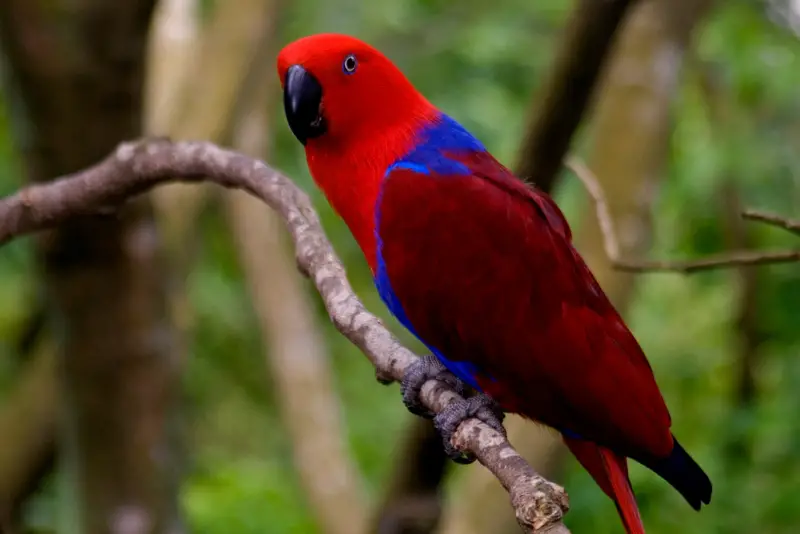
This stunningly colored parrot is predominantly crimson, except for dark blue markings on its wings, as well as a blue undertail.
This red and blue parrot is native to the Banda Archipelago in Indonesia, where it frequents lowland forests as well as mangroves.
It is locally common, and relatively easy to observe, due to the loud shrieks and calls that it makes when communicating with its group.
Scarlet Macaw
Scientific name: Ara macao
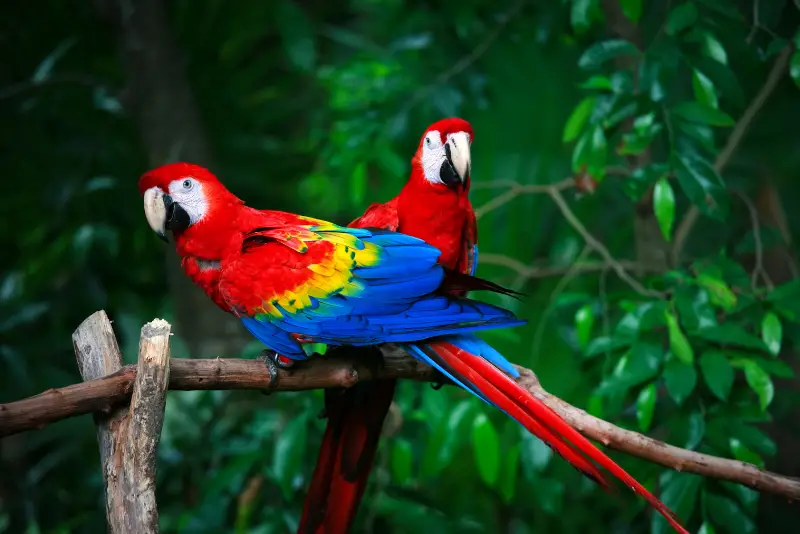
The Scarlet Macaw is a huge parrot that has become symbolic of the plight of the Amazon rainforest, as it has suffered massive population reductions due to deforestation and the pet trade.
Both sexes look alike, and are scarlet red on their heads, bodies, and tails, while their wings are blue with big yellow patches on the wing coverts.
This blue and red parrot is found in lowland rainforest habitats of northern South America, and prefers forest edges close to rivers and other bodies of water.
Red-and-green Macaw
Scientific name: Ara chloropterus
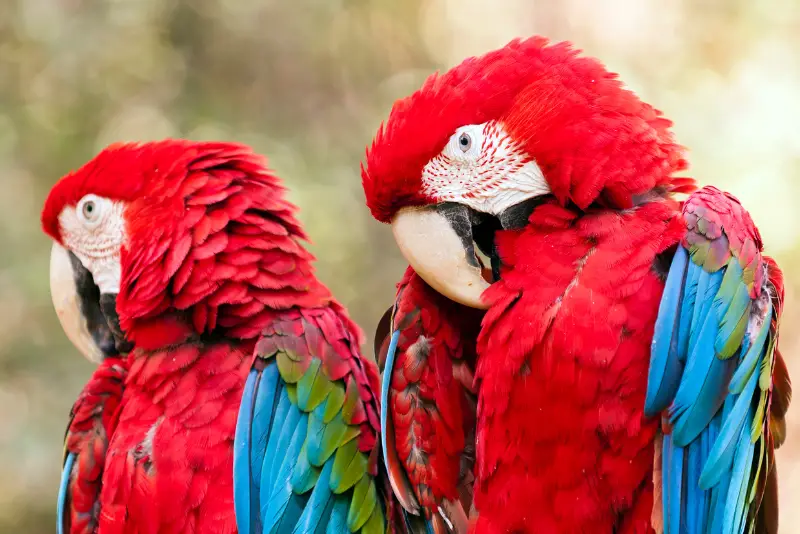
This is another large parrot with a red body and blue wings, as well as green wing coverts. The latter distinguishes it from the Scarlet Macaw, which looks similar, but has yellow wing coverts.
This beautiful parrot frequents lowland rainforests in the northern half of South America, and is often observed flying in pairs.
Sometimes it also forms groups that forage together on fruiting trees.
Blue-eared Kingfisher
Scientific name: Alcedo meninting
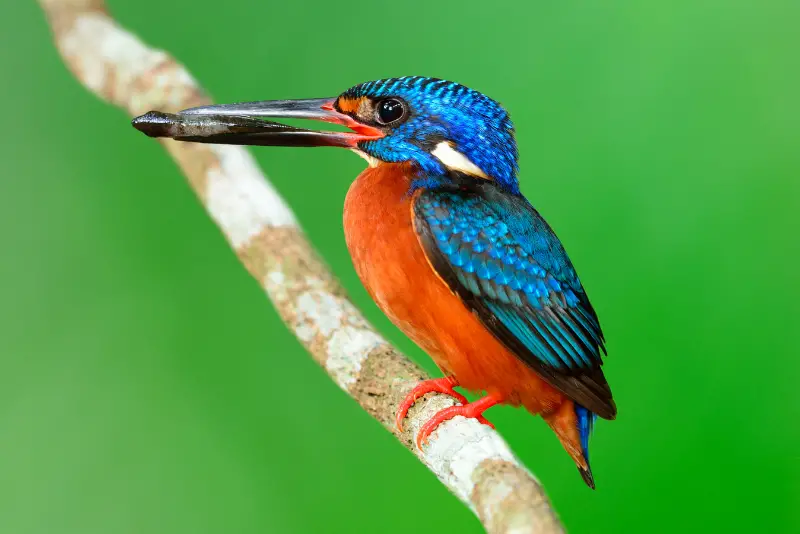
This tiny blue and red kingfisher is found in large parts of Southeast Asia and southern India.
Adults have an ultramarine blue back and dark blue wings, which contrast with its deep orange red underparts, and bright red feet.
The Blue-eared Kingfisher is found along rivers and streams in forested areas, and often calls attention to itself with its loud raucous call.
Blue-fronted Redstart
Scientific name: Phoenicurus frontalis

Males of this stunning redstart are easily identified due to their ultramarine-blue head and back, which contrasts sharply with the reddish orange chest and belly.
Females, on the other hand, are largely gray and brown, except for their rufous rump.
These redstarts are native to the foothills of the Himalayas, and other montane habitats in the region, but spend the winter at lower altitudes.
Blue Pitta
Scientific name: Hydrornis cyaneus
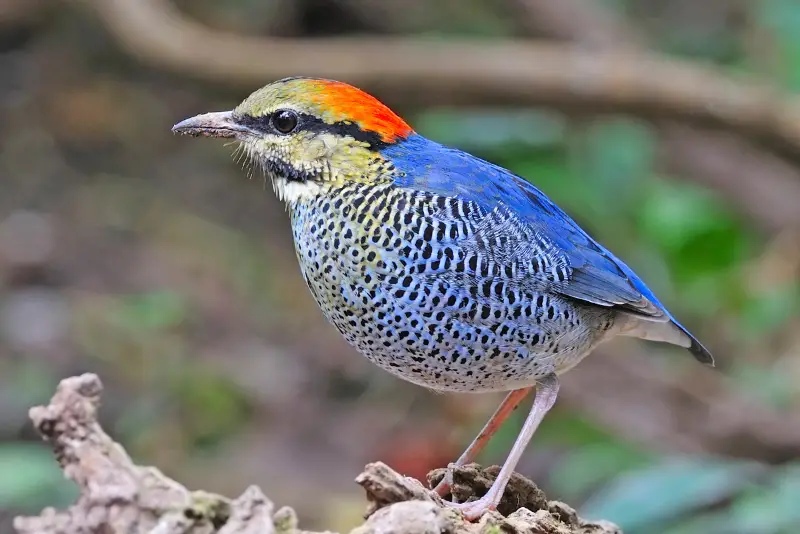
The male Blue Pitta is stunningly beautiful with a cerulean blue body, a black-and-green streaked head, as well as a bright orange red crown.
Females are gray brown, and a light blue breast with dark spots.
This blue bird with a red head forages on the ground in the dense vegetation of lowland forests in Southeast Asia, and can be hard to observe since it is very shy.
Masked Trogon
Scientific name: Trogon personatus
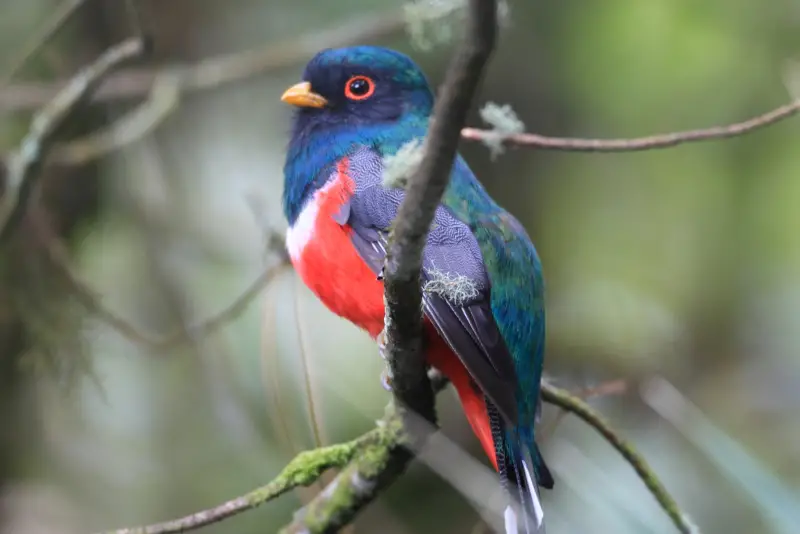
This locally common trogon has a bluish green head, chest, and back, as well as a bright red belly.
Females have a brown head and back, while both sexes have the characteristic dark mask.
The Masked Trogon is found in coastal areas of northeastern South America, from Colombia to Bolivia.
Cuban Trogon
Scientific name: Priotelus temnurus
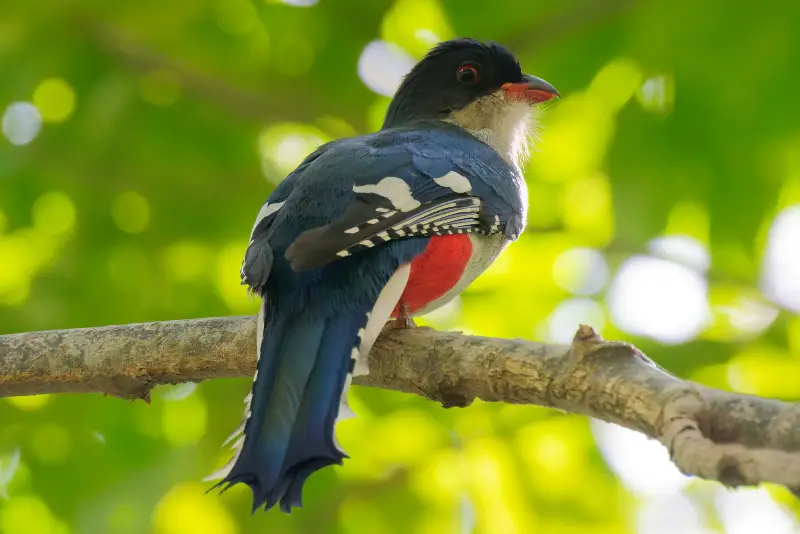
Cuban Trogons have an iridescent blue back and hood, as well as a white chest and brilliant red belly.
The blue, white and red colors of the Cuban Trogon are an accurate reflection of the colors of the Cuban flag.
This blue and red trogon is native to Cuba, where it is encountered in lowland forests. The best way to identify it is by its loud calls, since it often remains perched motionless in the middle of the forest canopy.
Blue-crowned Trogon
Scientific name: Trogon curucui
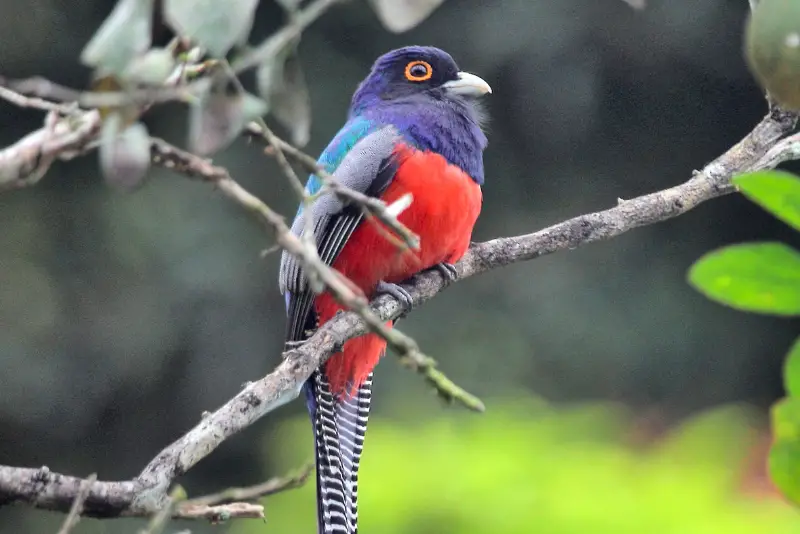
This small trogon can be recognized by its stunning dark blue head and back, contrasting with a flaming red belly and black wings.
The female has more grayish plumage, but otherwise looks similar, except for the fact that females have a white eyering, while males have a yellow eyering.
It is found in a variety of lowland forest habitats in South America, but is most common in moist forests adjacent to swampland.
Surucua Trogon
Scientific name: Trogon surrucura
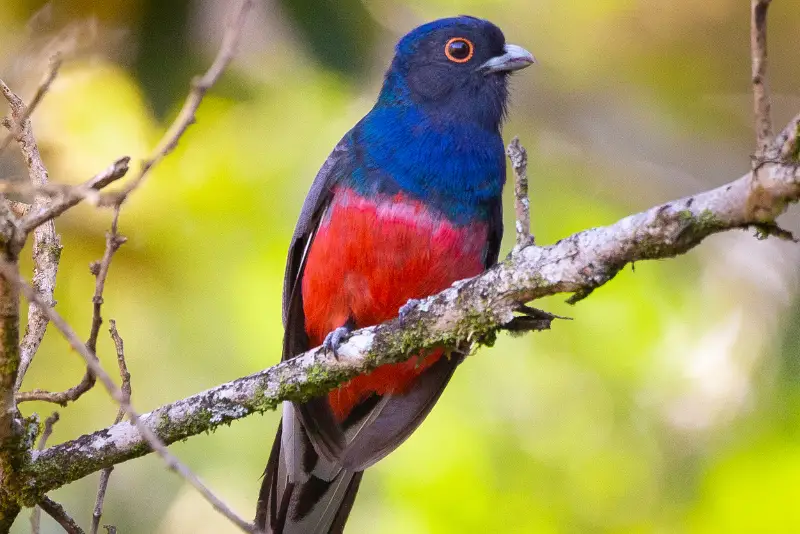
Male Surucua Trogons have a violet blue head and a dark blue chest contrasting with their flaming red belly.
Females, on the other hand, are more grayish than blue, and there are several geographic variations that have either an orange or a yellow belly.
This red and blue trogon is found in southern South America in Brazil, Paraguay and Argentina, where it frequents a variety of forest habitats.
Blue Manakin
Scientific name: Chiroxiphia pareola
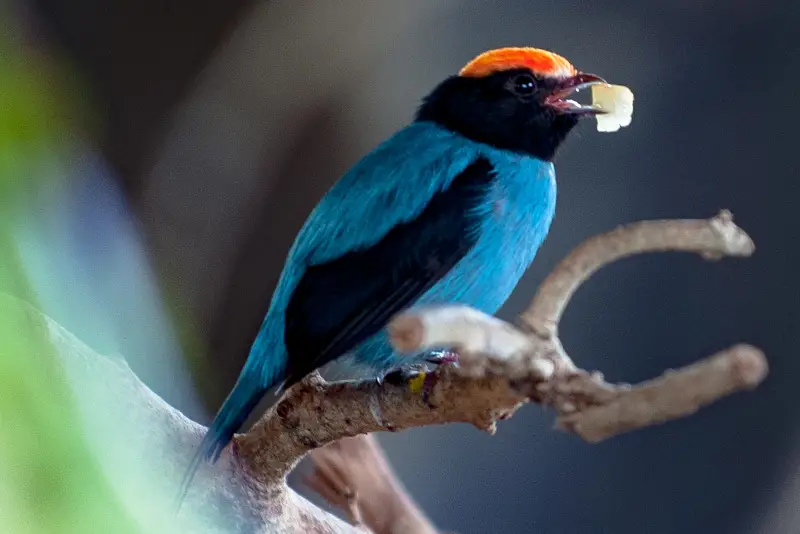
Also known as the Blue-backed Manakin, males of this species have a stunning combination of jet black wings, sky-blue body, and a bright red crown.
The female is entirely yellowish brown, and is best identified by association with its male.
This attractive manakin is found in northern South America, and frequents forest habitats with fruiting trees that it feeds on.
Long-tailed Manakin
Scientific name: Chiroxiphia linearis
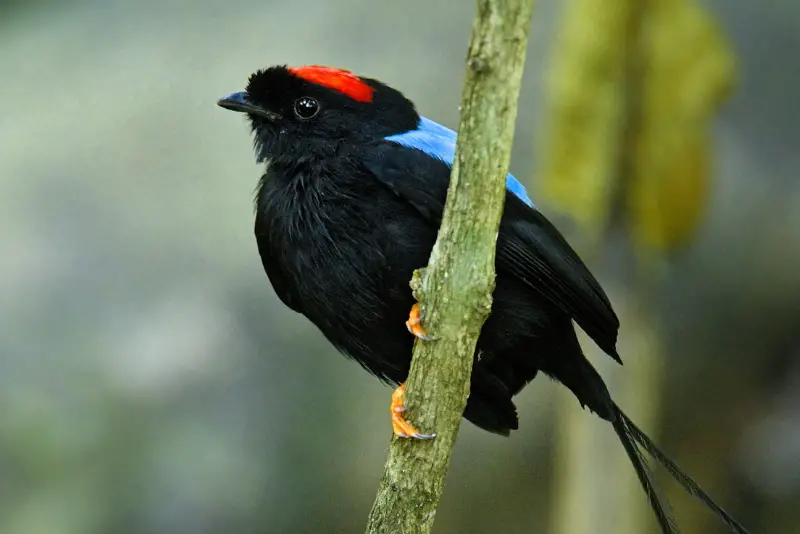
This manakin looks superficially similar to the aforementioned species, but can be readily distinguished by its long thin tail.
Males have a black body, as well as a sky blue back and a crimson red crown. Females are largely brown, but both sexes have red feet.
This small manakin is native to Central America, where it is found in lowland rainforest habitats.
Final remarks
In summary, here are the 15 types of red and blue birds:
- Painted Bunting
- Crimson Rosella
- Sri Lankan Blue Magpie
- Red Lory
- Scarlet Macaw
- Red-and-green Macaw
- Blue-eared Kingfisher
- Blue-fronted Redstart
- Blue Pitta
- Masked Trogon
- Cuban Trogon
- Blue-crowned Trogon
- Surucua Trogon
- Blue Manakin
- Long-tailed Manakin
If you’ve spotted one of these birds, but aren’t sure which species of bird it was, check our detailed ID guide with photos above.
If you enjoyed this article, check out our guide to the blue birds with orange chest.

